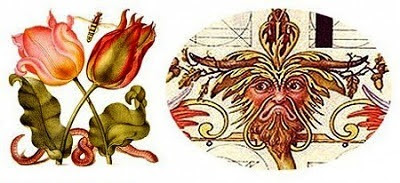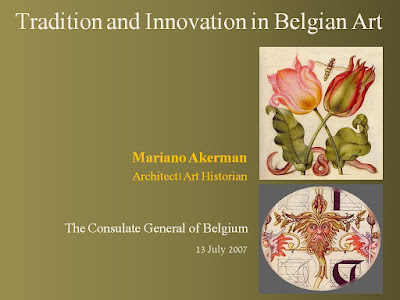A Cultural Program for Jerusalem and the Holy Land
by
Mariano Akerman
January 2017 - May 2019

Tradition and Innovation
Developed in the Holy Land, the 2017-2019 cultural activities have been conceived as a collaborative educational program, being based on the interplay between the notions of heritage and inventiveness.
The phenomenology of tradition and innovation is approached through a series of art lectures and activities that answer local educational needs and requests.
Along the program, Mariano Akerman explores the similarities and differences between Mannerist and Baroque imagery in Catholic culture; the evolution of the Jewish experience with the arts along the ages; the difficulties and clichés that prevail in contemporary art; visual expressions he created himself since 1981 on; the surprising transformations of the Other in the paintings of Francis Bacon; a group of Belgian pictures where mimesis and fantasy seem to complement each other; Schapiro’s influential writings of 1953 reclaiming a social history of art, the influence of such concept on next generation, and its possible validity; the way our perception and understanding of an artwork changes with the time; Fin-de-siècle symbolism in French and Belgian pictures and artifacts; and a vivid recollection about the art of teaching while respecting the student’s right to take time as he/she learns.
As a program, Meeting the Visual Arts entails discovering artworks as expressive interdisciplinary structures that succeed in opening the valves of feeling, reflection, and dialogue.
Meeting the Visual Arts
מפגש עם האמנויות
1
בארוק: אמנות קתולית בזמן הקונטרה-רפורמציה
Baroque: Catholic Art in Counter-Reformation Times
Bar-Ilan University, Ramat Gan
Department of History, Exodus Building, Room 65
Sunday, 22 January 2017 – 2 pm

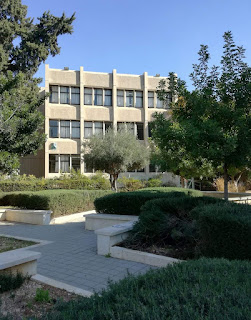
2
החוויה היהודית באמנויות היפות
The Jewish Experience with the Visual Arts
Ginot haYir, Mo'adon Ussishkin, Rehavia, Jerusalem
Wednesday, 1 March 2017 – 10:30 am

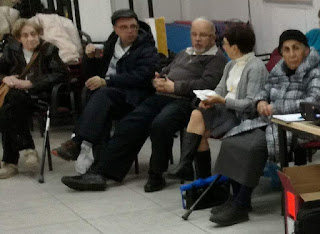

3
L'Art et Moi : Expression, Stratégie et Manipulation dans l'Art Contemporain
Lycée Français de Jérusalem
Tuesday, 7 March 2017 – 1:30 pm
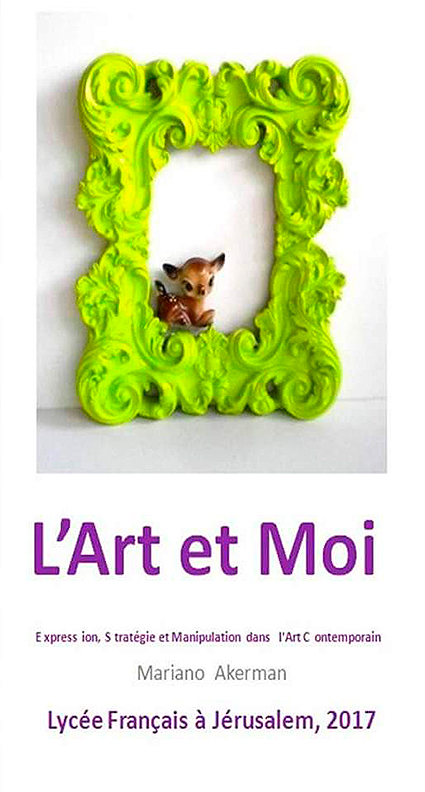


4
מסורת וחידוש: החוויה היהודית באמנויות היפות - מרקם הרוח
Tradition and Innovation - Texture of Spiritual
Matnas Beit haKerem, Jerusalem
Thursday, 25 May 2017 – 7 pm


Ahuva ben Horin, "Masoret VeChidush," Jerusalem: Beit Hakerem Community Center, 25 May 2017.
5
גילגולי האחר במשחק האמנותי של פראנסיס בייקון: להיות ולא להיות
Metamorphoses of the Other in the Artistic Game of Francis Bacon: To Be and Not To Be
Department of the History of Art, University of Haifa
Monday, 12 June 2017 – 11:45 am

אמנותו של פראנסיס בייקון הינה מיסתורית ומסקרנת. בציוריו של בייקון יש לאחר תפקיד מרכזי: הוא מופיע בהם כיצור מסוכן, אך גם מושך. זהותו של האחר אצל בייקון אינה תמיד ברורה ולעיתים האחר עובר גילגולים של ממש. לפי בייקון כל האמנות של ימינו הפכה למשחק ולכן מותר לו ליצור משחקים שונים ומשונים בין האחר הקיים לבין האחר המדומיין. הגרוטסקה הינה קטגוריה אסתטית באמנות וכל המאפיינים שלה כלולים בצורה זו או אחרת במשחקו האמנותי של הצייר הבריטי
נוכחותו של החריג -
המתח של המוכר שהופך למוזר -
ערבוב של מושגים מנוגדים -
המעוות, המוגזם, המגוחך -
כוונות מעורפלות -
אלוזיות למפלצתי ולחסר אנושיות -
במילים אחרות, הרמזים הדו-משמעיים שבמשחקו האמנותי של בייקון מעוררים בצופה מחשבות מגוונות, כך שקשה לצופה להחליט איפה הגבול בין האחר המציאותי לבין האחר המדומייון. "להיות ולא להיות" היא סוגיה חשובה במשחקו של בייקון, אשר מושך ומבלבל את הצופה דרך ביטוים בלתי-צפויים, כגון "אני מצייר את ההתלהבות המיואשת שלי" או "הנה אתה ,(יצור) הקיים (רק) לרגע (כי תיכף אתה תמות). אז, בתוך המשחק האמנותי משלו, בייקון משחק את ליצן החצר ,וכפי שתיאר אותו לוסיאן פרויד, "בייקון הוא החכם ביותר והפרוע ביותר". גם בדימוים החזותיים שלו, בייקון הוא אמן פרובוקטיבי מאוד. הוא אוהב סיטואציות שיוצאות מגדר הרגיל ומשתמש בגרוטסקה כפרדוקס המתאים ביותר לתפקידו כליצן מצחיק-ומפחיד
Abstract to "Gilgulei Heacher Bamischak Haomanuti shel Francis Bacon," in: Emma Fanner Maayan, "Mifgashim im Heacher: Hamuflah, Hamesakren ve-Hamesukan," Haifa: University of Haifa, 12 June 2017, fol. 4v.
6
Tradition and Innovation in Belgian Art: Masterpieces of Mimesis and Fantasy
The Consulate General of Belgium
Thursday, 13 July 2017 – 8 pm

Among the major achievements of Belgian artists are the development of the oil painting technique and the creation of a suggestive interplay between the concepts of reality and imagination in the visual arts.
Art-historian Mariano Akerman explores a group of Belgian artworks, to reveal their aesthetic qualities and hidden meanings. He considers the artworks from original, thought-enlarging perspectives, and makes them accessible to everyone.
Experienced and multi-prized, Akerman teaches Art History since 1981. He has given lectures on Belgian art in numerous educational institutions in Jerusalem, Manila, Buenos Aires, Karachi, Islamabad, Lahore, and Rio de Janeiro.
Jerusalem, The Consulate General of Belgium, Tradition and Innovation in Belgian Art: Masterpieces of Mimesis and Fantasy, 5 July 2017.
7
Schapiro, Style, 1953
Art History Department, The University of Jerusalem
Wednesday, 13 December 2017 – 1 pm
Schapiro's influence to the modern approach to art history cannot be understated. Thomas Crow describes Schapiro as the quintessential outsider writing art history.
8
Entre ciel et terre : un voyage à travers l'art français
Institut Français Romain Gary, Jérusalem
Tuesday, 27 March 2018 – 6:30 pm
« Il doit y avoir toujours énigme en poésie, et c'est le but de la littérature - il n'y en a pas d'autres - d'évoquer les objets » (Stéphane Mallarmé,
enquête par Jules Huret menée pour l'
Echo de Paris, parait en 1891;
Thibaudet).

9
Beaux-Arts : Bruxelles Fin de Siècle
Résidence de Belgique à Jérusalem
Wednesday, 28 March 2018 – 6:30 pm
Le créateur symboliste essai d’habiller l’image, l’être ou l’idée, d’une forme sensible pour nous les rendre appréhensibles, c’est-à-dire, pour nous rendre appréhensible leur essence.
10
Entre ciel et terre : un voyage à travers l'art français
Centre Culturel Français Chateaubriand, Jérusalem
Thursday, 29 March 2018 – 7 pm
«
Nommer un objet, c'est supprimer les trois quarts de la jouissance du poème qui est faite de deviner peu à peu : le suggérer, voilà le rêve. C'est le parfait usage de ce mystère qui constitue le symbole : évoquer petit à petit un objet pour montrer un état d'âme, ou, inversement, choisir un objet et en dégager un état d'âme, par une série de déchiffrements. [...] La poésie consistant à créer, il faut prendre dans l'âme humaine des états [...] bien chantés et bien mis en lumière, cela constitue en effet les joyaux de l'homme : là, il y a symbole, il y a création, et le mot poésie a ici son sens » (Mallarmé,
enquête, 1891;
Thibaudet).

11
Jadis et aujourd’hui : art et identité dans le pays du lait et du miel
À la Page, Revue Culturelle de Langue Française
Monday, 15 March 2018 – 7 pm
12
בני תערובת עם "דם מוכתם": ציור הקסטות כמבנה משמעותי
Hijos de mezcla con "sangre manchada": la pintura de castas como estructura significativa
Bar-Ilan University, Ramat Gan
Department of History, Building 505, Room 106
Tuesday, 8 May 2018 – 4 pm

La conferencia explora el vasto abanico sociocultural novohispano del siglo XVIII a través del género de la
Pintura de castas, ejecutada dentro del marco del arte colonial hispanoamericano, donde funcionaba como conjunto ilustrativo, evocando a su vez el legado clasificatorio y taxonómico de
Linneo (desarrollado en el Viejo Continente durante las primeras décadas del Siglo de las Luces). Con todo, las pinturas de castas funcionaban su vez como un canto al exotismo americano y como un autocomplaciente agente ideológico en manos de la élite virreinal en tiempos de la colonia: útil para reivindicar la jerarquía basada en una supuesta "limpieza de sangre", así como sus privilegios y diversos prejuicios que caracterizaron al Antiguo Régimen.
Partiendo de imágenes visuales e inscripciones dieciochescas, este trabajo analiza la naturaleza asombrosa, exuberante, confusa, parcial y contradictoria del antiguo sistema de castas colonial. Mas abordados son también sus aspectos positivos e inesperadas peculiaridades. Se intentan determinar entonces las especificidades de la pintura de castas y su importancia como fenómeno singular y sobresaliente de la cultura hispanoamericana.


13 Hurva
14
Patrimonio Histórico Argentino
Templo Libertad: arquitectura, historia e identidad
Universidad de Belgrano
Torre Universitaria, Auditorio Presidente Urquiza
Thursday, 14 March 2019 – 10:30 am

TEMPLO LIBERTAD: ARQUITECTURA, HISTORIA E IDENTIDAD. Sito en el centro de la Ciudad Autónoma de Buenos Aires, el Templo de la Congregación Israelita de la República Argentina, conocido localmente como “Templo Libertad,” ha sido declarado Monumento Histórico Nacional en diciembre de 2000 por decreto oficial N°1296. Tarjetas postales y guías para viajeros describen al Templo Libertad como un atractivo turístico singular. Marcos Vanzini lo ve como una singularidad urbana: “La semilla de una comunidad que floreció en una plaza.” Daniel Kripper lo aborda desde un inesperado ángulo místico-constructivo. Simón Moguilevsky suele rememorar los sucesos históricos que lo conciernen dentro del marco de su exclusivo “Torá-Tour.” Sara Vaisman recurre al Templo Libertad para analizar su tipología en un estudio comparativo de las sinagogas de Buenos Aires. Indudablemente el Templo Libertad es percibido como un edificio curioso y enigmático, pero ¿qué hace que el mismo sea una pieza de singular valor dentro de nuestro acervo cultural?


15
Templo Libertad: arquitectura, historia e identidad
Sociedad Hebraica Argentina
Sarmiento 2233, Auditorio Biblioteca
Tuesday, 19 March 2019 – 6 pm



16
Templo Libertad: su historia y arquitectura, 1860-1932
Congregación Israelita de la República Argentina, Libertad 785
Thursday, 21 March 2019 – 7 pm




17
L'art figuratif en Belgique: entre rêve et réalité
Résidence de Belgique à Jérusalem
 Program Brochure
References
Program Brochure
References
1. Ahuva ben Horin, "Masoret VeChidush," Jerusalem: Beit Hakerem Community Center, 25 May 2017.
2. Abstract to "Gilgulei Heacher Bamischak Haomanuti shel Francis Bacon," in: Emma Fanner Maayan, "Mifgashim im Heacher: Hamuflah, Hamesakren ve-Hamesukan," Haifa: University of Haifa, 12 June 2017, fol. 4v.
3. Jerusalem, The Consulate General of Belgium,
Tradition and Innovation in Belgian Art: Masterpieces of Mimesis and Fantasy, 5 July 2017.
"Mariano Akerman: Entre ciel et terre, voyage à travers l'art français",
Institut français de Jérusalem Romain Gary, March 2018 (
WB).
4. "Mars 2018, moins de la francophonie: Conférence Beaux-Arts: Bruxelles fin de siècle par Luis Mariano Akerman",
Institut français de Jérusalem, March 2018 (
WB).
5. "Mars 2018, moins de la francophonie: Conférence Entre ciel et terre, voyage à travers l'art français par Luis Mariano Akerman",
Institut français de Jérusalem Chateaubriand, March 2018 (
WB).
6. "Conférence de Mariano Akerman: Entre ciel et terre, voyage à travers l'art français",
Institut français de Jérusalem Chateaubriand: Open Agenda, 12 March 2018 (
WB).
7. Katty-Clara Bisraor Ayache, "
À la page fête sa naissance",
En direct de Jérusalem, 29 April 2018.





עמוק מאז
 Mariano Akerman
Mariano Akerman
Born in Buenos Aires in 1963, Mariano Akerman is a painter, architect and art historian. Working as a researcher and a lecturer, Akerman also develops educational activities that encourage free expression and communitarian involvement while considering the specificities and cultural background of the participants.
Akerman studied at the School of Architecture of Universidad de Belgrano (Argentina), completing his formation with a prized graduation project on modern architecture boundaries and space (1987). Abroad from 1991 onwards, he received a British Council Grant to research the artwork of Francis Bacon at Marlborough Fine Art and the Tate Gallery in London. Akerman is author of The Grotesque in Francis Bacon’s Paintings (1999) and "Bacon, Painter with a Double-Edged Sword" (2012).
In Asia, Mariano Akerman developed the educational series of conferences The Belgian Contribution to the Visual Arts (2005), In the Spirit of Linnaeus (2007), Discovering Belgian Art (2008-9), Raisons d’être: Art, Freedom and Modernity (2010), German Art (2010), and The Gestalt Educational Program (2011).
In the American continent, the series of lectures Art and Identity (2013) includes a conference devoted to Bacon's idiosyncratic imagery—"To be and not to be."
Specializing in Visual Communication, Akerman lectures on modern art at institutions such as the Museo Nacional de Bellas Artes in Buenos Aires,[12] the National Museum of the Philippines in Manila, Star of Hope School in Taytay, the National College of Arts in Lahore, the Quaid-i-Azam University in Islamabad, UNIRIO and the Pontifical Catholic University of Rio de Janeiro.








